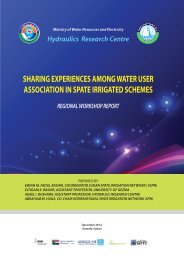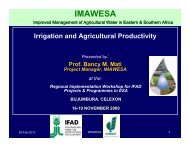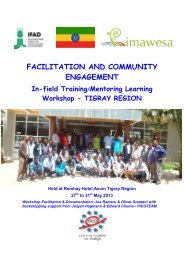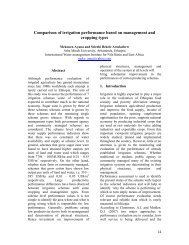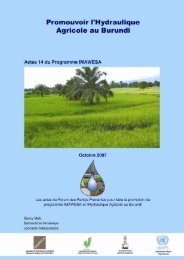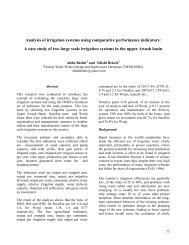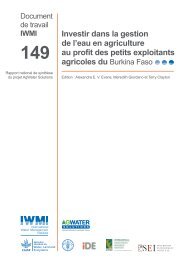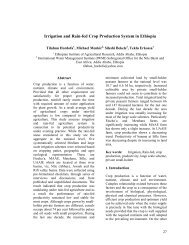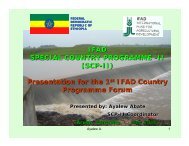Manual - Participatory rapid diagnosis and action ... - FAO.org
Manual - Participatory rapid diagnosis and action ... - FAO.org
Manual - Participatory rapid diagnosis and action ... - FAO.org
You also want an ePaper? Increase the reach of your titles
YUMPU automatically turns print PDFs into web optimized ePapers that Google loves.
164 Annex C. Brief presentation of PRDA training in Ethiopia <strong>and</strong> KenyaExpected outputsExpected outputs vary according to the institutional context of the training. Ifit is conducted only to benefit the participants, as individuals, <strong>and</strong> farmers ofthe selected irrigation schemes, only direct outputs will be attained.Direct outputs:• participants trained to apply PRDA tools <strong>and</strong> methodology;• identification of the main limiting factors <strong>and</strong> their inter<strong>action</strong> forincreased productivity <strong>and</strong> sustainability of selected irrigationsschemes;• evaluation of the extension <strong>and</strong> other supporting services provided tofarmers in the selected irrigation schemes;• <strong>action</strong> plans formulated to improve the performance of selectedschemes;• description <strong>and</strong> a set of indicators of the main characteristics ofselected irrigated agricultural systems in order to enable moreextensive monitoring of performance in the future.When training is conducted to benefit extension or development institutionsthrough their personnel, then possible indirect outputs are to be considered inaddition to the direct ones.Indirect outputs:• a regular monitoring <strong>and</strong> evaluation system is established within theinstitution or the existing one is improved <strong>and</strong> made more effective;• general recommendations are drawn from PRDA results on selectedschemes;• cooperation between staff of participating institution is intensified;• insights in research <strong>and</strong> training needs of the participating institutionsare increased.Achieving indirect outputs depend largely on the management of extensionor development institutions <strong>and</strong> little on the trainers. However, trainers canfacilitate it by:• preparing the training with the senior management <strong>and</strong> assessingthe relevance of these indirect outputs to the institution’s objectives,achievements, <strong>and</strong> human <strong>and</strong> financial resources;• planning a workshop at the end of the training to present its results toan audience of decision-makers <strong>and</strong> potential donors;• trying to minimize training costs to make repetition possible withinthe normal budget of extension <strong>and</strong> development institutions.



